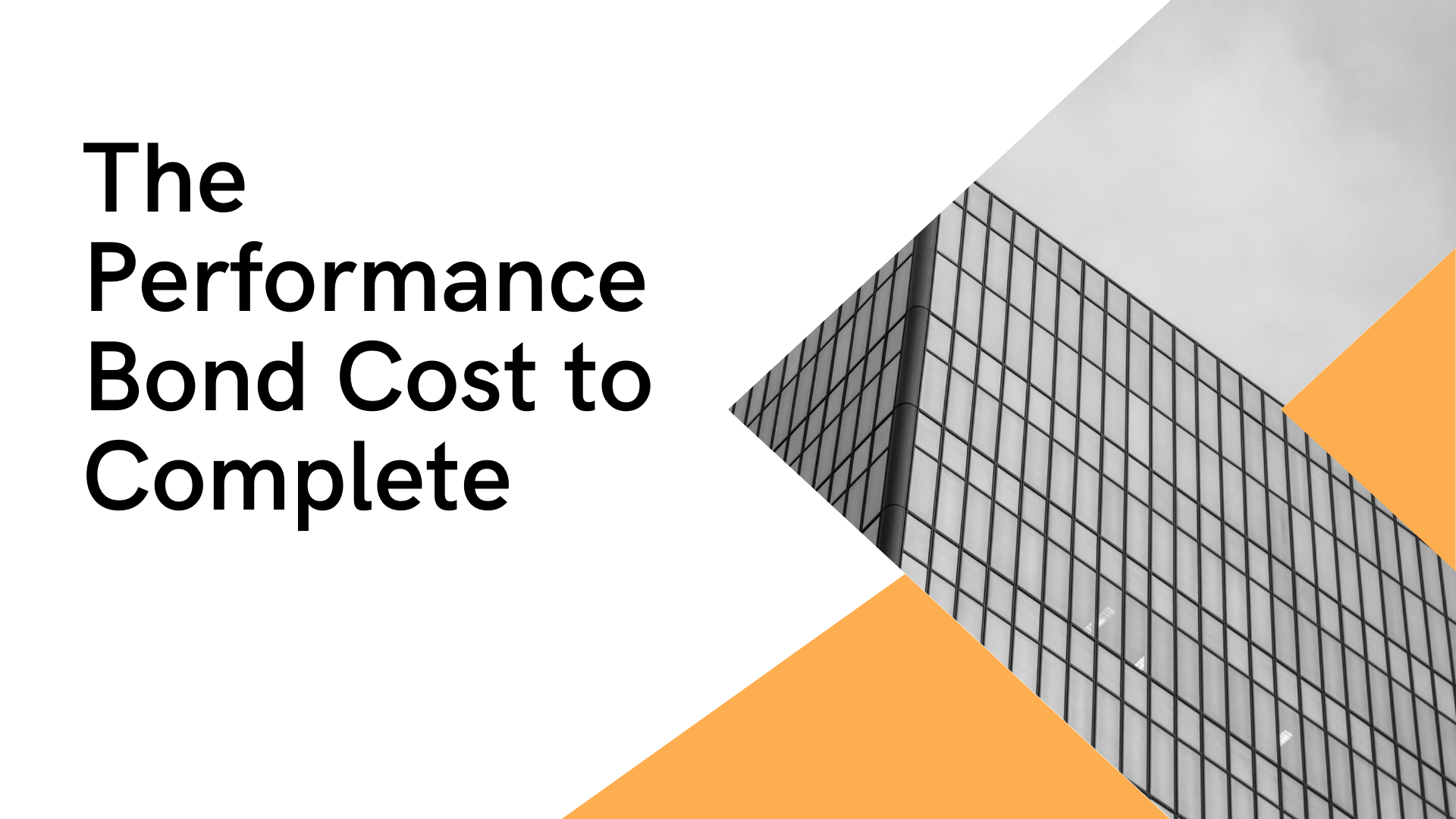How do you calculate the cost of a performance bond?
In the construction industry, a performance bond is a guarantee from a financially sound entity that it will pay the costs of completing a project if the contractor should fail to do so.
Performance bonds are required by many government entities as a condition for bidding on public work projects. In some cases, performance bonds must be issued before work can begin.
Performance bonds protect against fraudulent acts or irresponsible management and help ensure that work progresses as planned. For builders, this ensures you get paid what you’re owed.
In general, performance bonds must equal an amount at least equal to the lesser of:
– The contract price; or
– 150% of the estimated cost to complete the project. If your actual final price comes in under budget, you may ultimately owe less on your performance bond than what it initially took to get the job.
Once you determine how much your performance bond should be, the next step is to figure out just how much that will cost you. A performance bond can require a lot of financial collateral, so this is not something that should be taken lightly. However, the good news is that there are agencies that specialize in providing bonding services for contractors at affordable rates.
How are performance bonds paid?
Performance bonds are usually paid upon completion of the contract. Most contracts will not allow partial payment without completion. This is to ensure that contractors actually complete their end of the deal rather than just take your money and run. Furthermore, this protects companies from paying out large sums for partially completed projects or worse, no completed project at all.
Performance bonds are typically paid upon completion of the contract but it does depend on the contract. Sometimes performance bonds may require proof that any subcontractors have been paid before final payment can be made to the contractor.
On larger projects, this has often become standard practice so as to avoid “no show” jobs where contractors do not finish the work and do not pay their subcontractors or suppliers. If you are having trouble with your performance bond, contact your surety now to discuss how they handle progress payments.
How much does a 10% performance bond cost?
A performance bond, also called a bid or tender bond, is used to guarantee the fulfillment of contract terms. The amount of the bond represents 10% of the total value of the contract. For example, if you were awarded a $1 million dollar contract, your contractor would require that you supply them with a $100k (10%) bond before work could begin on your project. There are many different types of bonds; however, only three major categories: Bid/Performance Bonds; Payment Bonds; and Contract Guarantee Bonds.
Bid/performance bonds are required in all 50 states for construction contractors bidding on government-related projects. However, a 10% performance bond is not always required. The amount of money needed for the bid or performance bond varies from state to state and project to project.
In other words, you will have to contact your local business bureau or department of transportation in order to ask how much a 10% performance bond should cost. For example, if you were awarded a $1 million dollar contract, your contractor would require that you supply them with a $100k (10%) bond before work could begin on your project.
What is a 50% performance bond?
A 50% performance bond is a type of time and material bond where you are guaranteed payment once half of the work has been completed, as well as materials that have been ordered from suppliers. In other words, instead of paying based upon an estimated completion date and actual cost, you are paid based upon how much work has been completed.
As stated previously, under these circumstances there is NO guarantee you will receive final payment until all work has been completed and approved by the local government agency or general contractor overseeing the project. In most cases, a “final” draw is not guaranteed unless the contractor has been paid in full for all work completed to date and time and material conditions have been met.
Who holds the performance bond?
The performance bond is held by the Clerk of Superior Court in the county where the bonded project is improved. A separate, bank letter of credit must be opened for each project. If a contractor defaults on a contract and a surety company pays it from its own funds, this constitutes payment to the major contractor who shall apply it proportionately against all contracts with subcontractors who have been paid their retainage.
It can take up to 30 days after notification before payments are made from the bond because no payments will be made until there is proof that work was properly completed in accordance with contract specifications.
This means that when you have filed your claim, gotten an affidavit from your subcontractor along with pictures of deficient work, and filed bond claims, you may have to wait up to 30 days before your claim is paid. This should help you budget accordingly.

